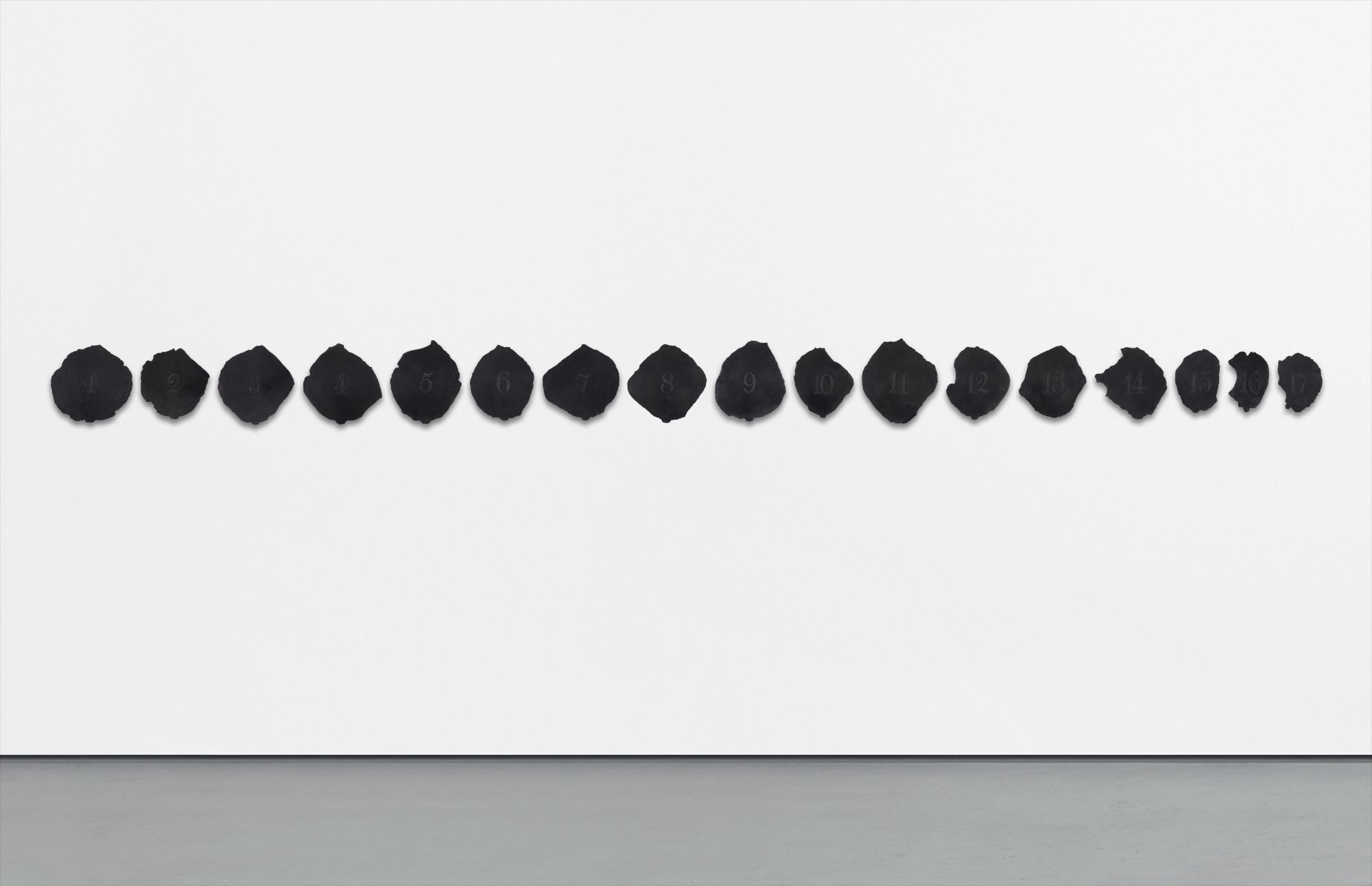

9
Roberto Obregón
Pétalos
1993
cut rubber, in 17 parts
installed dimensions variable; approximately 22 x 275 in. (55.9 x 698.5 cm.)
Full-Cataloguing
After receiving a traditional artistic education at Escuela de Artes Plásticas Julio Árraga in Maracaibo, Venezuela, Roberto Obregón soon focused his practice on conceptual art. Employing his background as a botanical illustrator, having realized several series of scientific drawings, leaf designs and rose petals would go on to become the emblematic subject matter of his career. Like many conceptual artists of the period, he often used photography to document exercises on observation, as it offered a more analytical approach that went beyond the decorative. During the 1970s, he started producing his first series documenting these plant studies using watercolor. He then began to dissect rose petals, gluing them sequentially on paper, constantly arranging and re-arranging them in a myriad of painstaking patterns resembling scientific diagrams. The present lot, Pétalos, 1993, is a prime example of the different unique spinoffs of his delicate petal dissections, where he cuts silhouettes of petals from sheets of rubber and organizes them in seemingly sequential patterns. In this way, the present lot is exemplary of Obregón’s methodical depiction of nature relating to time. The viewer is encouraged to move in a linear direction while experiencing the work, rather than looking at it from a
fixed position. Suggesting the idea of disintegration within the cyclical nature of evolution, Obregón’s black rose petal evokes the inevitable transformation of time.
fixed position. Suggesting the idea of disintegration within the cyclical nature of evolution, Obregón’s black rose petal evokes the inevitable transformation of time.
Roberto Obregón
Venezuelan / Colombian | B. 1946 D. 2003Venezuelan artist Roberto Obregón studied at the Escuela de Artes Plásticas Julio Árraga in Maracaibo and was influenced by Eadweard Muybridge and Marcel Duchamp. The primary leitmotif in his body of work is the concept of cyclical time and roses. Obregón's works document his physical, bodily decay over time through the physical dissection of roses: He created installations of large rose petals made from cut rubber, which symbolized the dissection.
These petal dissections can also be read as an accumulation of everything a rose could signify for humanity. Further, they denote the bond between the body and nature, as cycles of time and decay affect the body and the rose equally — a concept reminiscent of Félix González-Torres's work.